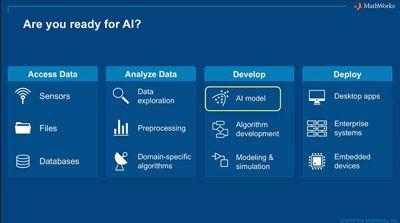Artificial intelligence alone is not enough
- Details
- Hits: 4015
 With new techniques like Artificial intelligence (AI) not only our society, but also the industry is facing a fundamental change. While companies from the engineering team to senior management recognize the need to implement AI in their design and development processes, actual implementation of AI technologies has been slow.
With new techniques like Artificial intelligence (AI) not only our society, but also the industry is facing a fundamental change. While companies from the engineering team to senior management recognize the need to implement AI in their design and development processes, actual implementation of AI technologies has been slow.
The main reason is that many do not know exactly how this technique can be used efficiently and profitably. However, this is only one of many questions that companies should ask themselves if they want to use AI
Beyond Alexa and autonomous driving
 Face recognition on Facebook, machine translation or autonomous driving - Artificial intelligence is already being used in many areas and gives us a glimpse of a future in which machines can assume increasingly important tasks.
Face recognition on Facebook, machine translation or autonomous driving - Artificial intelligence is already being used in many areas and gives us a glimpse of a future in which machines can assume increasingly important tasks.
But what does Artificial Intelligence mean for an engineer in a medium-sized company or for a scientist in a research institute? The possibilities are many-sided: with AI, for example, new methods of food control can be applied or the geological nature of rocks analyzed to make tunnels faster, more efficient and less expensive. In almost all areas of research and industry, AI technologies can be used to make processes more efficient or to find new ways to master tasks.
How artificial intelligence becomes efficient
When speaking of Artificial Intelligence today, in most cases it is meant that a machine can mimic intelligent human action - a definition that has existed since the introduction of the term AI in the 50 years. But for a really efficient use, the machine only becomes interesting if it can match or even surpass human performance. That's the way we give people the ability to do repetitive tasks or have things done faster, more safely, or more accurately by computers.
For this, machines have to be trained for specific tasks. Traditionally, this meant creating a program that processes the data and then delivers the output you want. Applying machine learning - a widely used AI technique - reverses this approach by making sure that the machine gets all the important data and dictating the desired output. The computer then writes the appropriate program for it. In some cases, only the input and the machine creates a corresponding model.
Data, earnings, machine-learning model - something is missing
But in most cases, data, a desired outcome, and the ability to create a machine-learning model make up only a small portion of an application. What is missing, for example, is the entire process of data collection and processing in advance and its implementation in an embedded system.
This becomes clear with the example of a lane assistance system: A machine learning model recognizes the lanes on roads and can ensure that a vehicle keeps its lane. But first, data from many different sensors and cameras must be obtained and synchronized. In addition, the system needs information about the speed and whether the vehicle should turn. These data must be analyzed and preprocessed - for example, to correct poorly exposed images or image disturbances caused by heavy snowfall.
The lane detection algorithm needs to be integrated into simulations to test if it works properly. It is then installed on an embedded processor to run in real time in the vehicle.
AI as part of a fully mature design process
All of these tasks are workspaces of engineers and researchers, without which the AI model would not work. This means that artificial intelligence is only one step in the work of many, at the end of which there is an intelligent machine. In fact, it is only part of the model development. In addition, it may be useful to use traditional algorithm development or modeling and simulation.
Looking at the entire workflow, there are still some essential steps to be taken, such as the ability to acquire data from sensors, documents or databases and analyze, analyze and process them. Following model building, deployment takes place on desktop apps, in data centers and clouds, or on embedded systems.
In the end, AI is just another tool we can use to solve challenges in a different way or face new challenges. We want to show that AI is easily accessible to engineers and researchers, and that they can use it in a workflow that is familiar to them, even if they do not have any special previous knowledge in this area.
Excerpt from the keynote address for Matlab Expo
